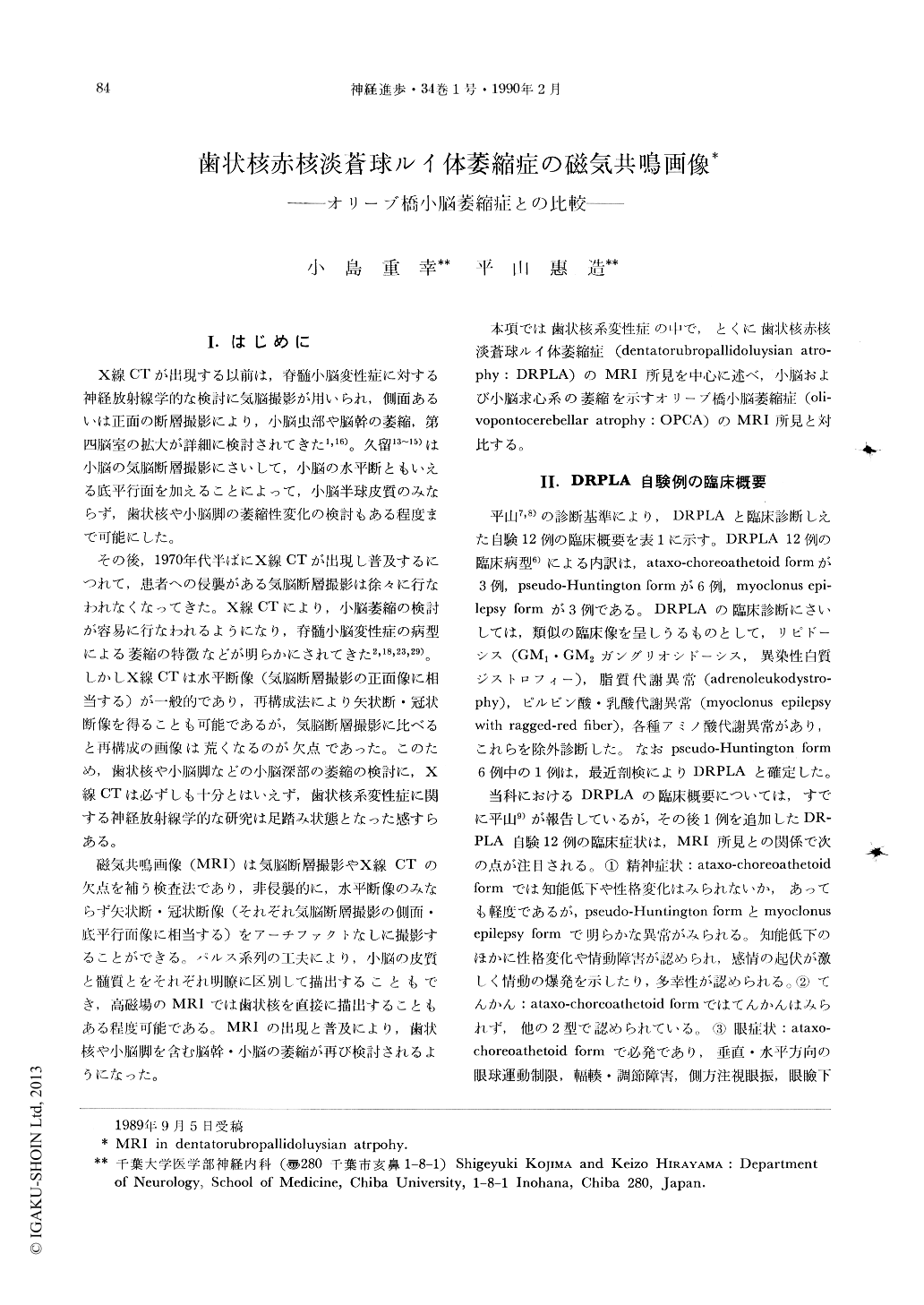Japanese
English
- 有料閲覧
- Abstract 文献概要
- 1ページ目 Look Inside
I.はじめに
X線CTが出現する以前は,脊髄小脳変性症に対する神経放射線学的な検討に気脳撮影が用いられ,側面あるいは正面の断層撮影により,小脳虫部や脳幹の萎縮,第四脳室の拡大が詳細に検討されてきた1,16)。久留13~15)は小脳の気脳断層撮影にさいして,小脳の水平断ともいえる底平行面を加えることによって,小脳半球皮質のみならず,歯状核や小脳脚の萎縮性変化の検討もある程度まで可能にした。
その後,1970年代半ばにX線CTが出現し普及するにつれて,患者への侵襲がある気脳断層撮影は徐々に行なわれなくなってきた。X線CTにより,小脳萎縮の検討が容易に行なわれるようになり,脊髄小脳変性症の病型による萎縮の特徴などが明らかにされてきた2,18,23,29)。しかしX線CTは水平断像(気脳断層撮影の正面像に相当する)が一般的であり,再構成法により矢状断・冠状断像を得ることも可能であるが,気脳断層撮影に比べると再構成の画像は荒くなるのが欠点であった。このため,歯状核や小脳脚などの小脳深部の萎縮の検討に,X線CTは必ずしも十分とはいえず,歯状核系変性症に関する神経放射線学的な研究は足踏み状態となった感すらある。
Atrophy and signal change of the brain in dentatorubropallidoluysian atrophy (DRPLA) were analyzed using magnetic resonance imaging (MRI) and their results were compared with those in olivopontocerebellar atrophy (OPCA).
First, T1-weighted inversion recovery MRI was performed on seven patients with DRPLA (1 ataxo-choreoathetoid form, 6 pseudo-Huntington form), fourteen patients with OPCA and fourteen normal control individuals to assess the atrophy of the brain. Although remarkable dilatation of the fourth ventricle had been said to be characteristic in OPCA, both marked dilatation of the fourth ventricle and cerebellar atrophy were significantly found in DRPLA as well as in OPCA. Marked dilatation of the fourth ventricle was suggested to be due to the degeneration of the dentate nuclei and their efferent fibers in DRPLA and the middle cerebellar peduncles in OPCA.

Copyright © 1990, Igaku-Shoin Ltd. All rights reserved.


